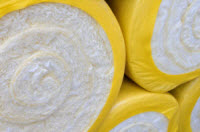Adding proper insulation underneath your metal roof is not only a great way to reduce your energy demands, but can also make your house a more comfortable place to live. The insulation will keep your home cool in the summer, warm in the winter, and help you save money on your heating and cooling bills. Insulation also helps prevent damage from moisture and mold formation. There are several different metal insulation options to choose from, depending on your needs and budget.
When choosing metal roof insulation for your house, it’s important that you consider the R-value (measure of thermal resistance) ratings of the material. Generally, the higher the R-value, the better the insulating material is. Another thing you need to keep in mind is how buildings lose of gain heat. There are three basic types of heat loss or gain: Conductive, radiant, and convective.
While metal is the most conductive of all roofing materials, conductive heat loss or gain is not a significant contributor to the overall heat loss/gain in buildings. Radiant and convective heat loss/gain are the biggest contributors to the total heat loss or gain in buildings with metal roofs. A good metal roofing insulation material should, therefore, have superior convective and radiant barrier capabilities. The following are the basic choices for metal roof insulation materials.
Metal Roof Insulation Options
1. Fiberglass batts.
Fiberglass batts offer one of the cheapest and easiest ways to insulate metal roofs. This insulating material consists of fine, thread-like glass formations that are woven together and mixed with other synthetic materials to form a rough, thick insulating pad. The “glass” in the material is the same basic substance used in glassware.
As an insulating material, fiberglass is very versatile. You can cut it into standard widths or any other width, and then fit it in accordance to your specific needs. The material can be placed directly under the metal panels, or it can be installed directly on an existing roof surface.
The only downside of fiberglass batts is that it’s not very safe to use. This is because; being made from fine glass strands, shards or small particles of glass are often formed. These microscopic bits of glass can be very damaging to your hands, eyes, and even lungs. When installing this type of insulation, you should wear protective clothing, such as masks, glasses and gloves, to avoid any side effects.
2. Spray foam.
This is one of the most common and effective metal roof insulation options. Polyurethane form insulation has a higher R-value per inch, and is very easy to work with. It can be used to insulate old or new metal roofs without causing any disruption, or the need for re-roofing. But it’s more expensive than fiberglass and polystyrene insulation.
Spray foam insulation is applied through high pressure spray machinery or pneumatic pump as a heated liquid. The foam is mixed with water before being sprayed under high pressure. As it reacts with oxygen in the air and the water dries up, the polyurethane foam expands, then hardens and cures within minutes, resulting in thick, rigid foam insulation.
Spray foam offers an excellent option for insulating crevices and awkward-shaped areas where other metal roof insulation options cannot work since it’s self-adhering. It also works great to prevent buildup of moisture as well as rodent and insect infestations.
Spray foam is commonly used together with polystyrene or fiberglass insulation. Unless you have experience in spray foam application, its installation is better left to a professional as using too much of it could damage the roof. However, there are some small kits that you can use for small DIY jobs at home.
3. Rigid board insulation.
This is a building material that is used to provide thermal resistance to roofs, walls, and even foundations. It’s comes in extruded or formed sheets or panels of varying sizes, made from polyurethane or polystyrene. The R-values for the materials are expressed per inch. So the thicker the material is, the higher the total R-value.
Sheets of rigid board insulation are typically placed under the metal roof panels. The sheets are fitted tightly together, and joints sealed or caulked for maximum thermal resistance. Being denser and thinner than other metal roof insulation options, it can be installed with fewer joints and gaps, which reduces air leakage.

